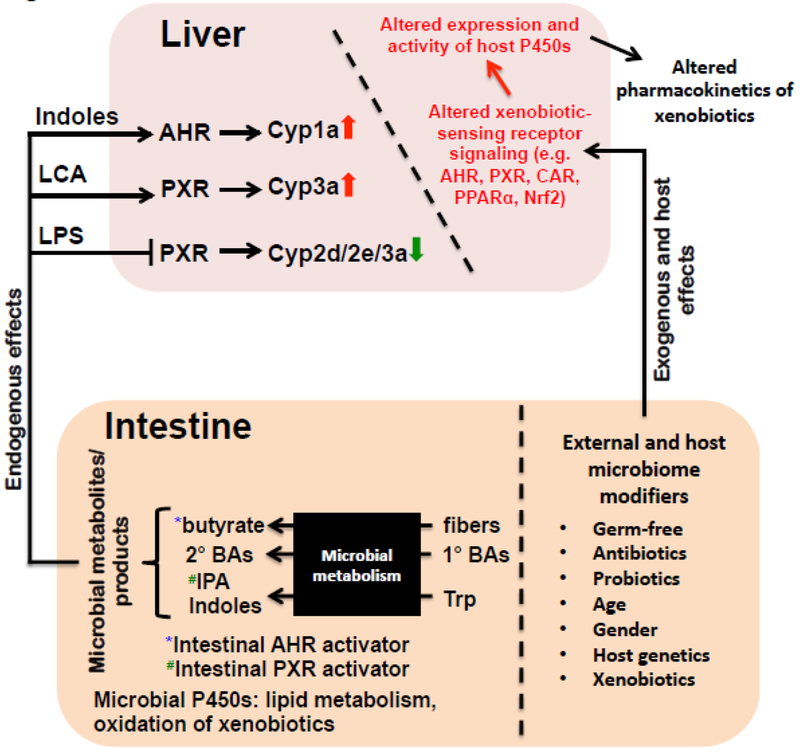Figure 1.
Summary of the regulation of P450s within the gut-liver axis. Distinct microbial metabolites produced from the intestine, such as butyrate (from fermentation of fibers), secondary bile acids [BAs] (from primary bile acids), as well as indoles and indole-3-propionic acid (IPA) (from tryptophan), are known activators of certain host receptors, such as AHR (butyrate and indoles) and PXR (IPA). Certain microbial metabolites may enter the circulation and reach the liver to modulate the host receptor signaling and targeted P450 gene expression. Microbiome modifiers, such as germ free condition, the use of antibiotics/probiotics, age, gender, host genetics, and exposure to other drugs and environmental chemicals, may shift the composition and functions of gut microbiome, leading to altered host receptor signaling and target gene expression. Microbial P450s as a separate entity in the intestine have been shown to contribute to lipid metabolism as well as oxidation of xenobiotics. Trp: tryptophan; 1°: primary; 2°: secondary.

